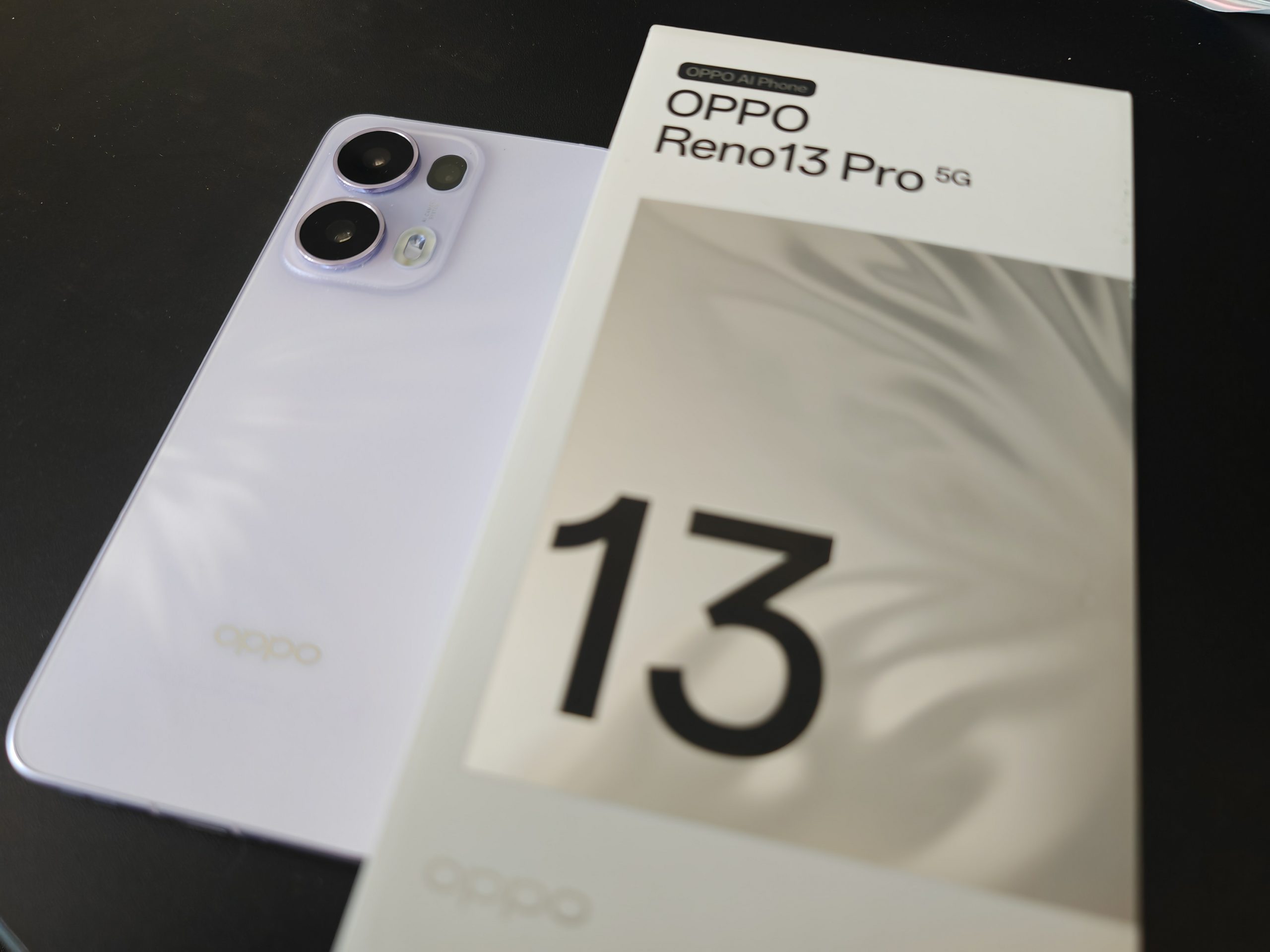
Introduction: Redefining the Mid-Range Premium?
Oppo’s Reno series has traditionally carved a niche for itself by focusing on stylish design and camera prowess within the competitive mid-range to upper-mid-range smartphone market. For years, Reno phones offered near-flagship aesthetics and photography experiences, sometimes perceived as slightly compromising on raw performance compared to competitors. With the arrival of the Reno 13 Pro, Oppo seems determined to shift this perception. Positioned below the flagship Find X series, the Reno 13 Pro arrives with promises of not just refined design and pro-grade cameras, but also improved performance, a robust build, and a suite of AI features, aiming to justify its premium mid-range price tag ( £649). Does it deliver on these promises and stand out in a crowded market?
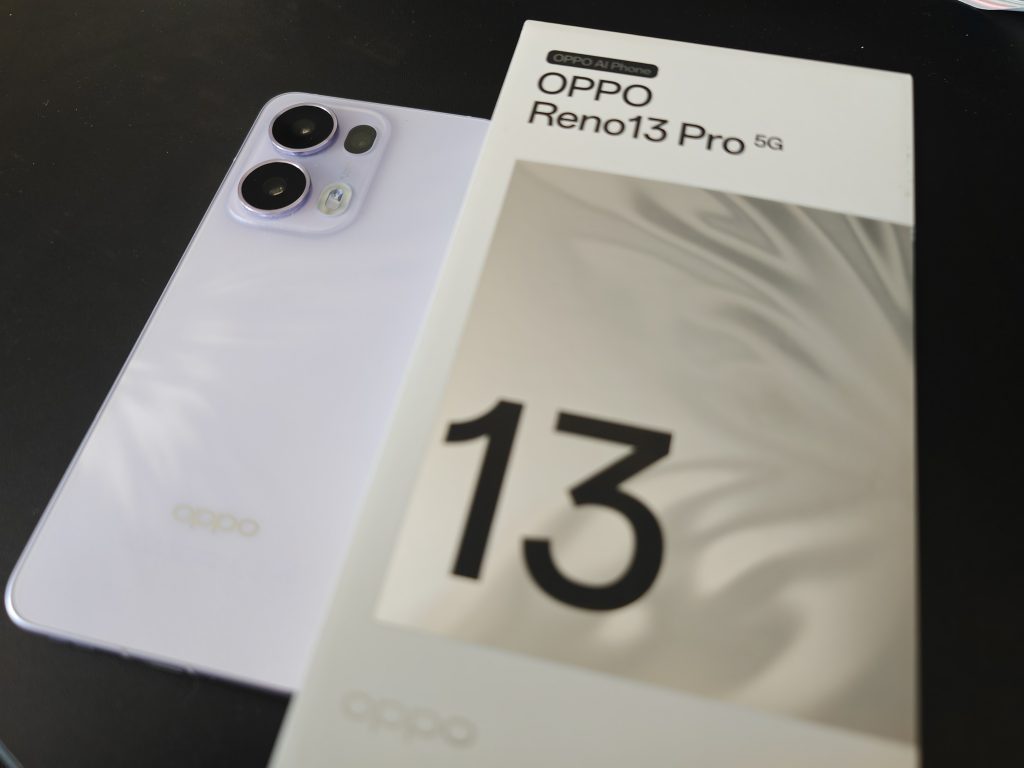
Design and Build Quality: Elegance Meets Durability
- Aesthetics: Oppo continues its focus on design elegance. The Reno 13 Pro boasts a sleek profile, measuring approximately 162.7 x 76.6 x 7.55mm and weighing around 195-197g. It features flat edges combined with a subtle “micro-curved” screen on the front and a “one-piece sculpted glass” back panel, aiming for seamless transitions and a high-end feel.
- Materials & Feel: An aerospace-grade aluminium frame is used, adding to the premium texture and durability. The back panel, particularly in the “Plume Purple” colourway, features unique light-reflecting effects (described as a “butterfly effect”). A “Graphite Grey” option offers a more understated look.
- Durability: A standout feature is the impressive IP rating. The Reno 13 Pro boasts IP66, IP68, and IP69 certifications. This signifies resistance to dust, low-pressure water jets (IP66), submersion up to 2 meters for 30 minutes (IP68), and even high-pressure, high-temperature water jets (IP69). This level of water and dust resistance is uncommon in this price segment and allows for unique use cases, like underwater photography in pools. Oppo calls this combined protection the “All-Round Armour Body.”
- Layout: The camera module design appears less protruding than its predecessor (Reno 12 Pro), but still causes some wobble on flat surfaces. Volume rockers and the power button are well-placed and offer good tactile feedback. An IR blaster is also included.
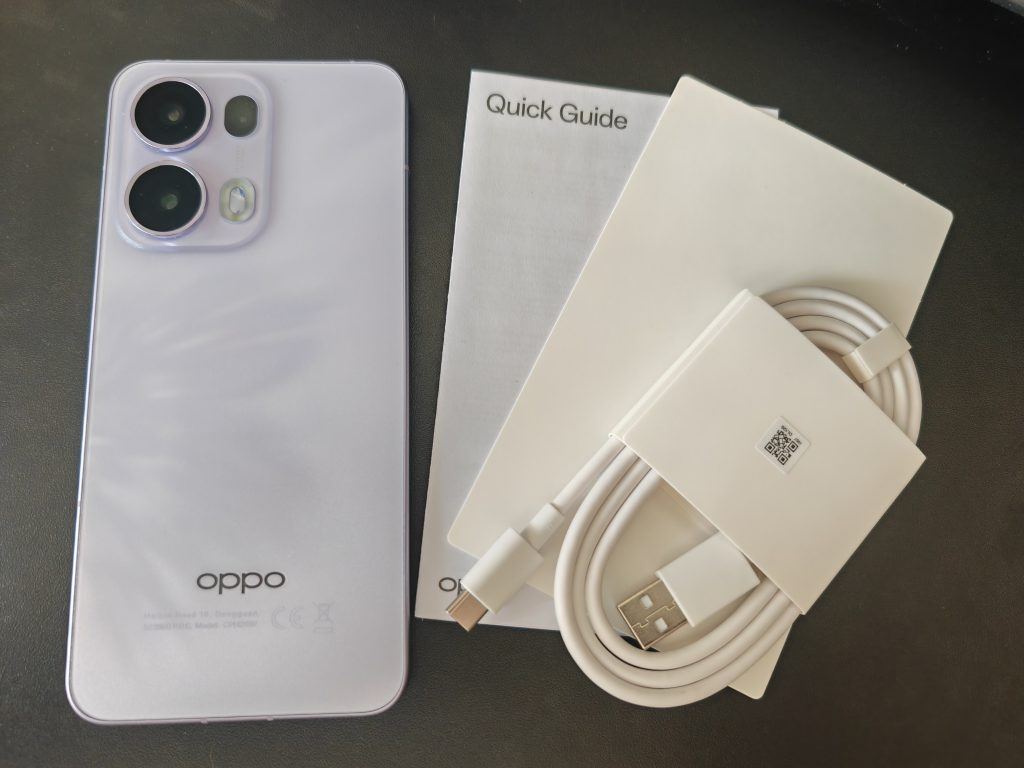
Display: Vibrant Visuals with a Caveat
- Specifications: The Reno 13 Pro features a large 6.83-inch AMOLED display with a high resolution of 2800 x 1272 pixels (described as FHD+ or 1.5K), resulting in a sharp pixel density of 450 PPI. It supports a 120Hz adaptive refresh rate (options for 60/90/120Hz) and a 240Hz touch sampling rate for smooth scrolling and responsive gaming. The panel boasts 1.07 billion colours and covers 100% of the DCI-P3 colour gamut. Protection is provided by Corning Gorilla Glass 7i.
- Quality & Experience: The display for its vibrant, popping colours (without being overly saturated in ‘Natural’ or ‘Pro’ modes), deep blacks typical of AMOLED, and excellent viewing angles. The subtle curve on all four sides and thin bezels contribute to an immersive viewing experience, considered among the best in its price range by some. HDR10+ support enhances content watching. Oppo also highlights eye comfort features like hardware-based low-blue-light solutions and high-frequency PWM dimming (3840Hz) at low brightness.
- Brightness: The main point of contention is the peak brightness. Rated at 1200 nits (HBM – High Brightness Mode) and a typical maximum of 600 nits.
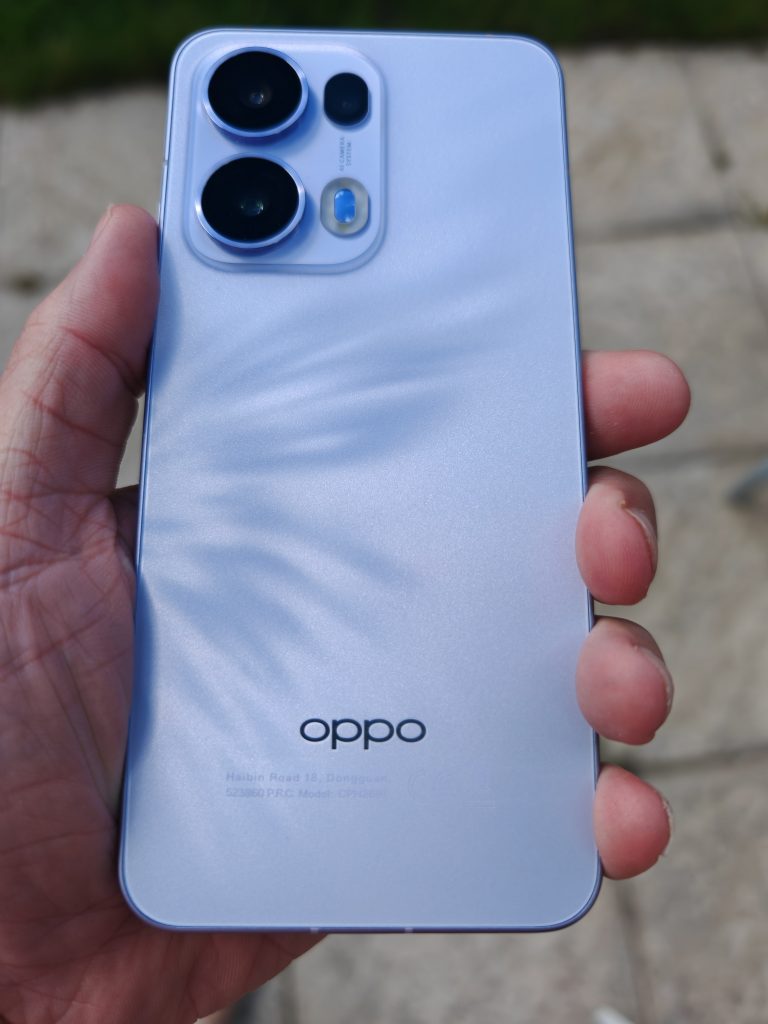

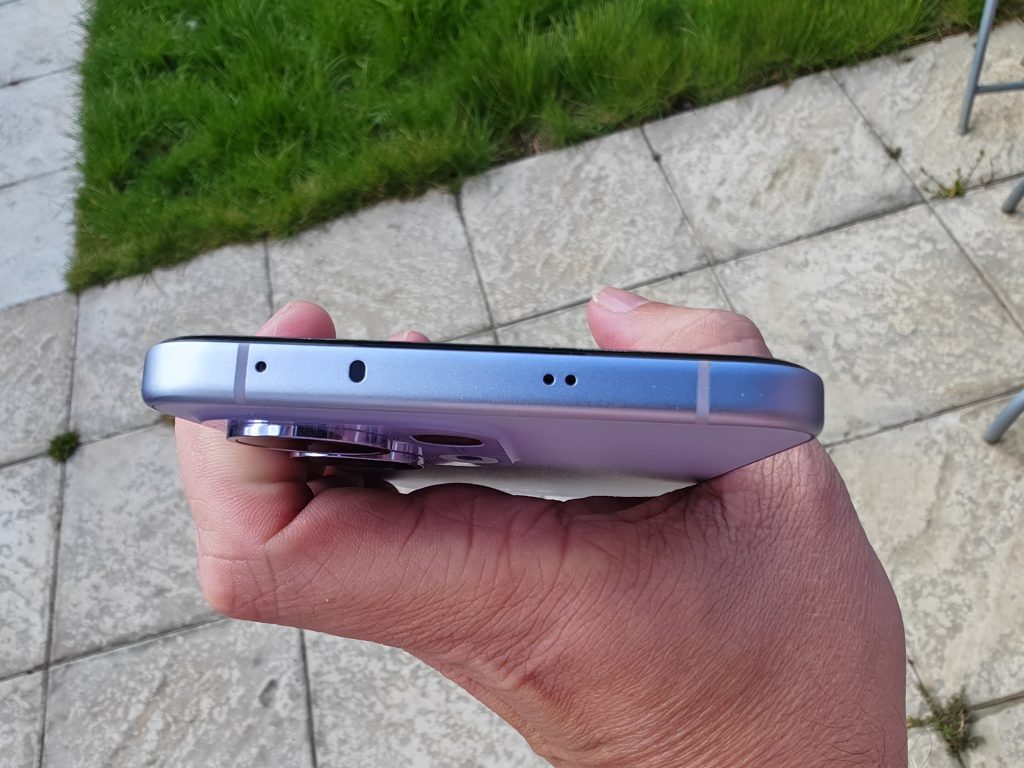

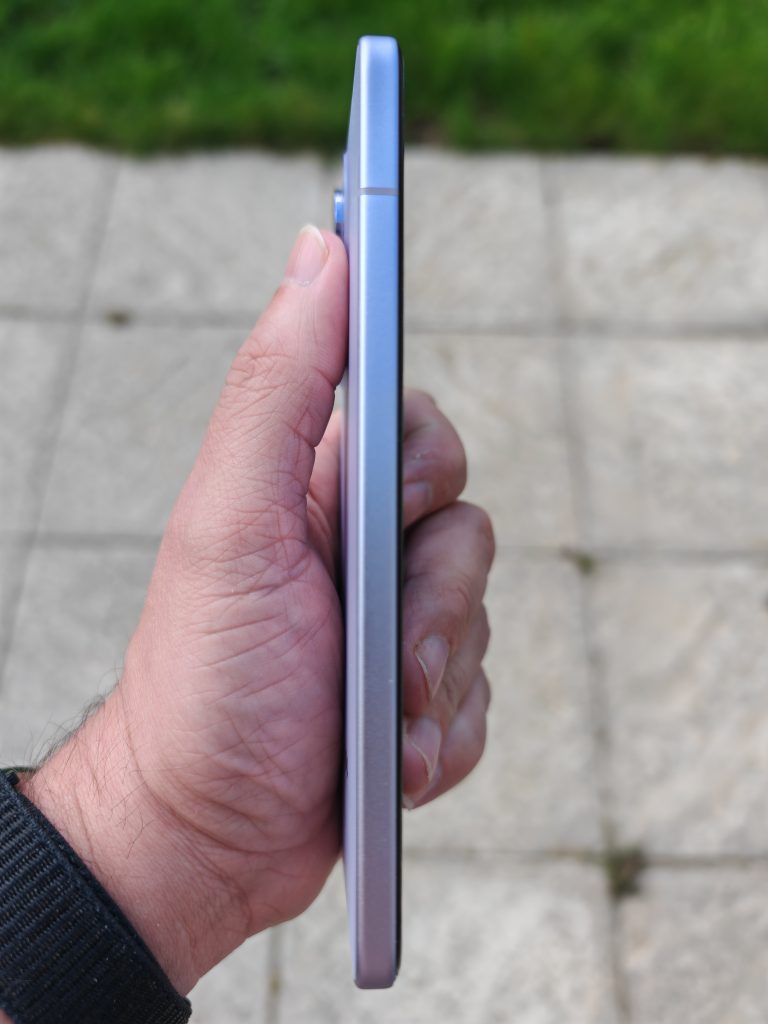
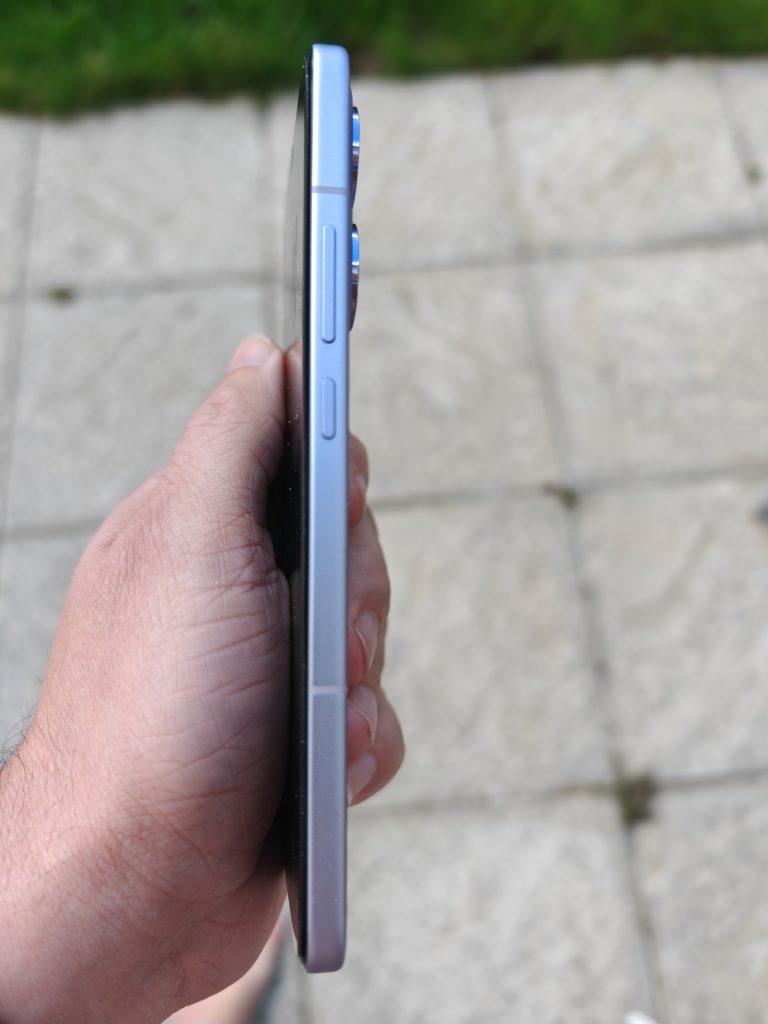
Performance: Bridging the Gap?
- Chipset: Powering the Reno 13 Pro is the MediaTek Dimensity 8350 chipset. Built on a 4nm process, this octa-core SoC features a configuration of 1x Cortex-A715 @ 3.35 GHz, 3x Cortex-A715 @ 3.20 GHz, and 4x Cortex-A510 @ 2.20 GHz, paired with an ARM Mali-G615 MC6 GPU. Oppo claims significant improvements in CPU (20%↑) and GPU (60%↑) performance compared to previous generations, along with reduced power consumption.
- RAM & Storage: The device typically comes with 12GB of fast LPDDR5X RAM, with some markets potentially seeing a 16GB option. Storage options are generous, usually starting at 256GB and going up to 512GB (or even 1TB in some listings), using the UFS 3.1 standard. There is no mention of expandable storage via a card slot.
- Real-World Experience: General usage, UI navigation, and multitasking are described as smooth and fluid, aided by the high refresh rate display and ample RAM. The Dimensity 8350 is positioned as a capable upper-mid-range chip. It’s considered a solid performer, but perhaps not the absolute fastest for the price if raw power is the top priority.
- AI Processing: Oppo emphasises the chip’s efficiency in handling on-device AI tasks with controlled power consumption, leveraging the MediaTek APU 780 NPU.
Cameras: Versatile Imaging with AI Smarts
- Rear Setup: The Reno series’ traditional strength, the camera system, appears versatile on paper:
- Main: 50mp wide sensor (Sony IMX890 mentioned in one source) with f/1.8 aperture, 84° FOV, AF, and OIS.
- Telephoto: 50mp sensor with f/2.8 aperture (85mm focal length mentioned), AF, and OIS, enabling 3.5x optical zoom.
- Ultrawide: 8mp sensor with f/2.2 aperture and a wide 116° FOV, also supporting AF.
- Front Camera: A high-resolution 50mp sensor with f/2.0 aperture, 90° FOV, and autofocus.
- Image Quality: The primary camera for capturing brilliant shots in both daylight and low light, with good detail, sharpness, contrast, dynamic range, and accurate skin tones. The telephoto lens is also highlighted as impressive, delivering sharp images with natural colours and good detail at its optical zoom level (3.5x) and performing well for portraits. Digital zoom up to 120x is available, leveraging AI, but quality degrades significantly at extreme levels. The 8MP ultrawide is deemed decent, performing well in daylight for landscape shots, though perhaps not matching the primary sensor’s vibrancy.
- Video: The rear cameras can record up to 4K at 60fps, with EIS/OIS support available across resolutions. Slow-motion options include 1080p@120fps and 720p@240fps. The front camera also supports 4K up to 60fps. Dual-view video recording is available.
- Special Features:
- Underwater Mode: Leveraging the IP69 rating, this mode allows capturing photos and videos underwater (e.g., in pools) using physical buttons, as touch input is disabled.
- AI Camera Features: Oppo has integrated numerous AI enhancements: AI Clarity Enhancer (improves low-res/cropped images), AI Unblur (sharpens blurry motion shots), AI Reflection Remover (removes reflections when shooting through glass – mixed results reported), and AI Eraser 2.0 (object removal). AI Telephoto Zoom assists at high digital zoom levels. AI Portrait, AI Reimage (artistic filters), and AI Motion are also part of the AI Studio suite.
- AI Livephoto: Similar to Apple’s Live Photos, this captures short video clips with photos, allowing users to choose the best frame or share dynamic images on supported platforms (Instagram, TikTok, WhatsApp mentioned).
Battery Life and Charging: Endurance Champion
- Capacity: The Reno 13 Pro packs a substantial 5800mAh battery (typical capacity, rated capacity is 5640mAh).
- Endurance: This large battery translates into excellent battery life. You can easily getting through a full day (over 24 hours) with more than 7 hours of screen-on time, even with heavy usage including browsing , social media, video watching, document editing, and some gaming.
- Charging: The phone supports Oppo’s 80W SUPERVOOC fast wired charging, with a full charge in around 42 minutes. It also supports PD charging (9V/1.5A).
Software: ColorOS 15 with AI and Bloatware
- Operating System: The Reno 13 Pro runs ColorOS 15, based on the latest Android 15. ColorOS is generally regarded as a smooth, feature-rich, and highly customizable Android skin. I also like you have customisation options, allowing users to tweak icons and aesthetics. Oppo promises 60-month fluency protection (long-term smoothness).
- AI Integration: Beyond the camera, AI features permeate the software:
- AI Writer: Generates captions for social media.
- AI Summary: Creates summaries of articles or recordings.
- AI Studio: Includes the aforementioned photo editing tools.
- Most AI features are noted to be cloud-based, requiring an internet connection.
- Bloatware: The amount of pre-installed bloatware on the Oppo Reno 13 Pro. While some are potentially useful apps (Booking.com, LinkedIn, Netflix, TikTok etc.), many are questionable games or ad-serving folders like “Hot Apps” and “Hot Games.” Thankfully, most of these can be uninstalled, but their presence detracts from the initial premium experience.
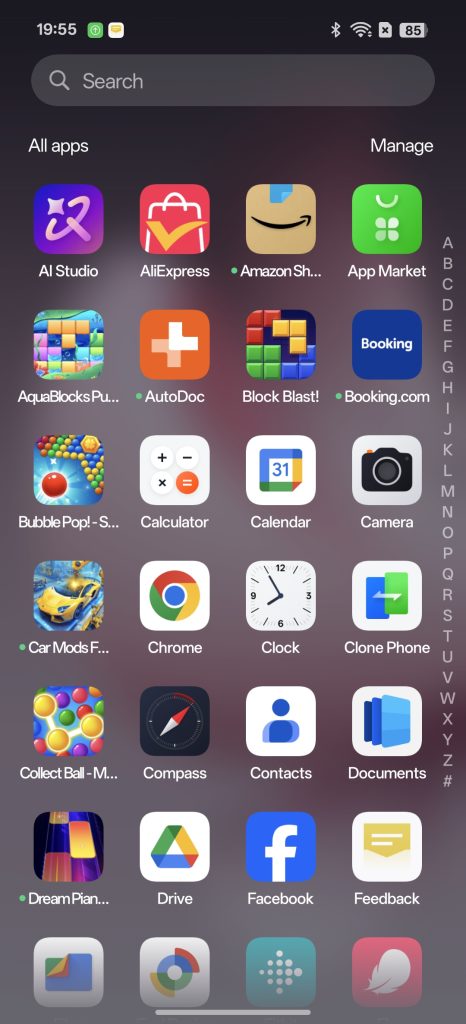
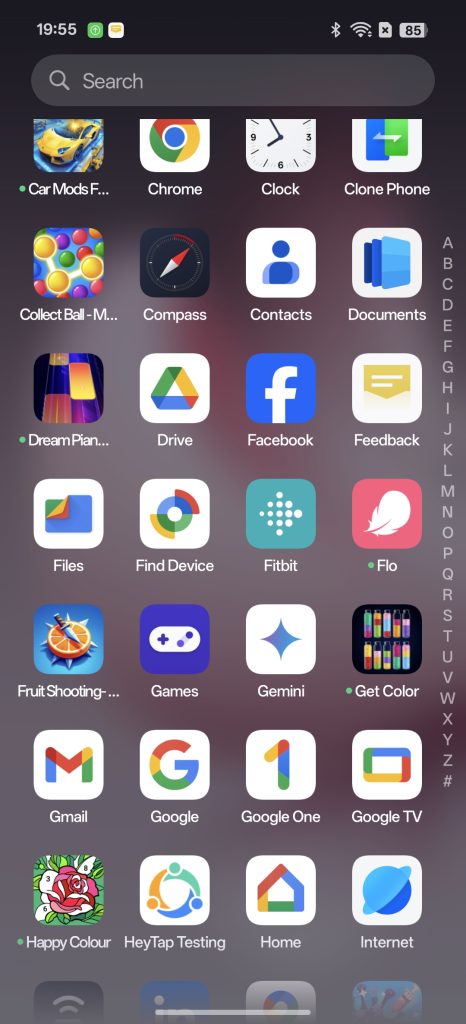



Connectivity and Other Features
- Network: Full 5G support across numerous bands, along with 4G LTE, 3G, and 2G. Dual SIM (Nano-SIM) functionality is standard. AI LinkBoost 2.0 aims to improve signal stability, especially in challenging environments or while gaming.
- Wireless: Supports modern Wi-Fi standards including Wi-Fi 6E (and Wi-Fi 6, 5, etc.) with 2×2 MIMO. Bluetooth 5.4 with support for various audio codecs (SBC, AAC, aptX HD, LDAC, LHDC 5.0) is included. NFC is present for contactless payments.
- Ports & Audio: Uses a USB Type-C port (USB 2.0 speeds mentioned in one spec sheet, which is slightly disappointing). There is no 3.5mm headphone jack; audio output is via USB-C or Bluetooth. The phone features stereo speakers which provide decent audio output, with an option to boost volume significantly (up to 300%), although sound quality may degrade at maximum levels.
- Sensors: Includes an in-display optical fingerprint sensor (described as fast and reliable), accelerometer, gyro, proximity, compass, ambient light sensor, colour temperature sensor, and an Infrared (IR) remote control sensor.
Camera Samples
Pricing and Availability
- UK: Available for £649 (12GB/512GB). (OPPO Online Store, EE, and Currys)
- Colours: Graphite Grey / Plume Purple (review colour).
Pros and Cons Summary
Pros:
- Sleek, premium design with high-quality materials (aluminium frame, glass back).
- Excellent IP66/68/69 water and dust resistance, enabling underwater use.
- Vibrant, sharp, and smooth 120Hz AMOLED display.
- Versatile camera system, particularly strong main and telephoto sensors.
- Impressive low-light camera performance (main sensor).
- Unique and fun underwater photography mode.
- Extensive and genuinely useful AI features (camera editing, productivity).
- Outstanding battery life thanks to the large 5800mAh battery.
- Very fast 80w wired
- Smooth performance with ample RAM (12 GB+) and storage (UFS 3.1).
- Feature-rich and customizable ColorOS 15 (Android 15).
- Includes IR blaster.
Cons:
- Display peak brightness (1200 nits) lags behind some competitors, potentially affecting bright outdoor visibility.
- The 8mp ultrawide camera is only decent, not exceptional.
- A significant amount of pre-installed bloatware apps and ad folders. (Most can be uninstalled.)
- Camera module design still causes some wobble on flat surfaces.
- Price point places it against strong competition.
Verdict: A Stylish and Feature-Packed Contender
The Oppo Reno 13 Pro successfully elevates the Reno line beyond just being a “camera phone.” It presents a compelling package that blends stylish design with unexpected ruggedness (IP69), a beautiful display (despite brightness concerns), a truly versatile and AI-enhanced camera system, exceptional battery life, and flagship-level charging speeds.
The performance is solid for everyday use and gaming, even if it doesn’t top benchmark charts for its price. The biggest drawbacks are the persistent issue of bloatware in ColorOS, which slightly mars the otherwise premium software experience.
The Reno 13 Pro is a well-balanced, feature-rich smartphone that delivers a borderline flagship experience in many key areas. It’s an excellent choice for users who prioritise camera versatility (including unique features like underwater shooting), premium design, outstanding battery endurance, cutting-edge AI features, and are willing to accept slightly lower peak brightness and manage the initial bloatware.
TNC Score
4.1/5.0



